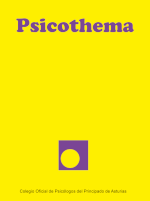Resumen
Antecedentes: varios estudios han mostrado diferencias en los procesos motivacionales que llevan al consumo excesivo de alcohol en adolescentes. El objetivo del trabajo fue analizar los motivos de consumo de alcohol en menores y sus diferencias según el género, la edad o el grado de consumo. Método: se recogió una muestra representativa (N = 2865) de adolescentes de 12 a 18 años (edad media 14,24, dt=1.33). Se evaluaron las variables consumo problemático, binge drinking y motivos de consumo mediante un cuestionario diseñado ad hoc, que identificaba las cuatro categorías de motivos de Cooper. Resultados: los análisis (ANOVA, correlación de Pearson y regresión logística) mostraron que no hubo diferencias de género en consumo ni en binge drinking. Los menores que abusaban del alcohol informaron de más presencia de reforzadores de todo tipo, siendo el consumo una fuente importante de reforzamiento intrínseco. La conformidad predijo el consumo problemático del alcohol en varones y disminuyó la frecuencia del binge drinking en chicas; además, el grupo mayor mostró más presencia de los motivos de bienestar y sociales. Conclusiones: el estudio sugiere que no sería de interés centrar la prevención en las consecuencias negativas del consumo, sino en el entrenamiento de habilidades concretas.Descargas
Los datos de descargas todavía no están disponibles.
